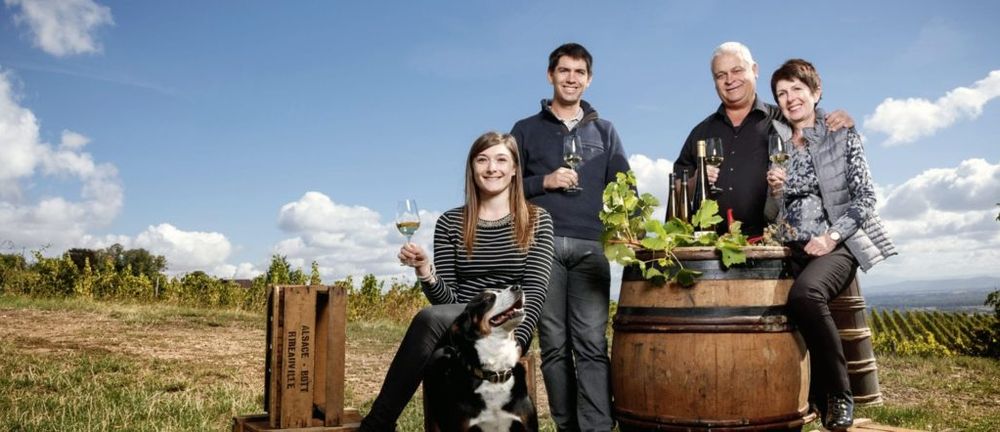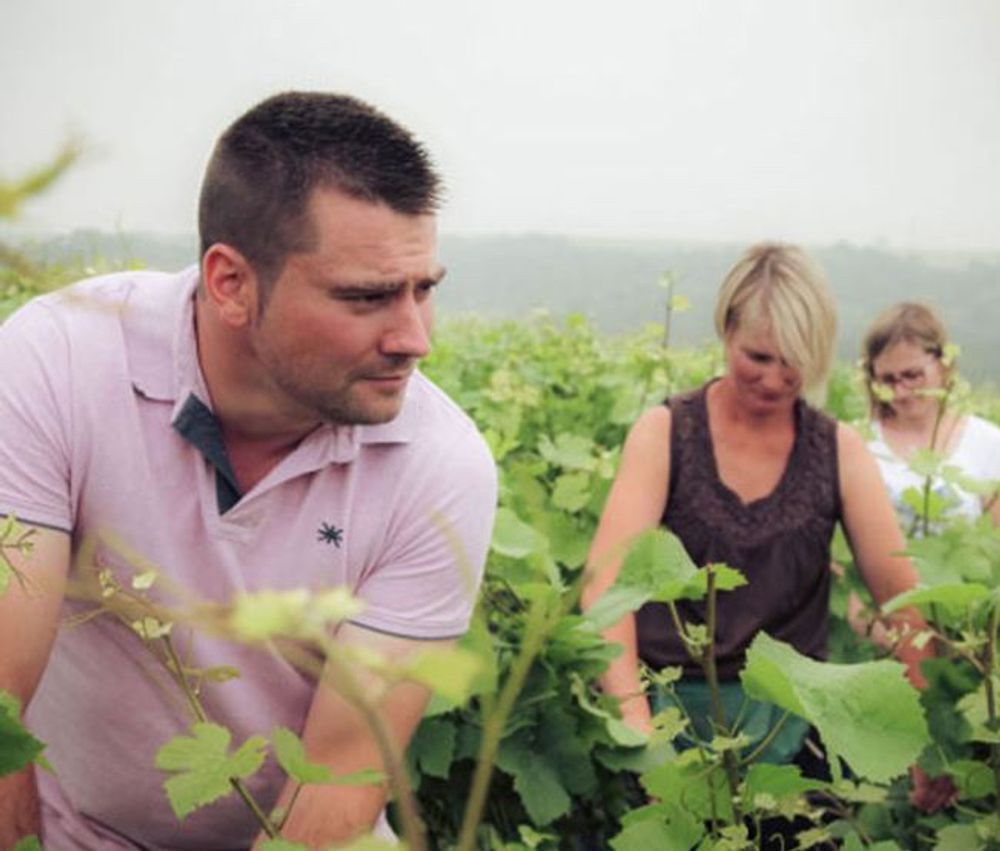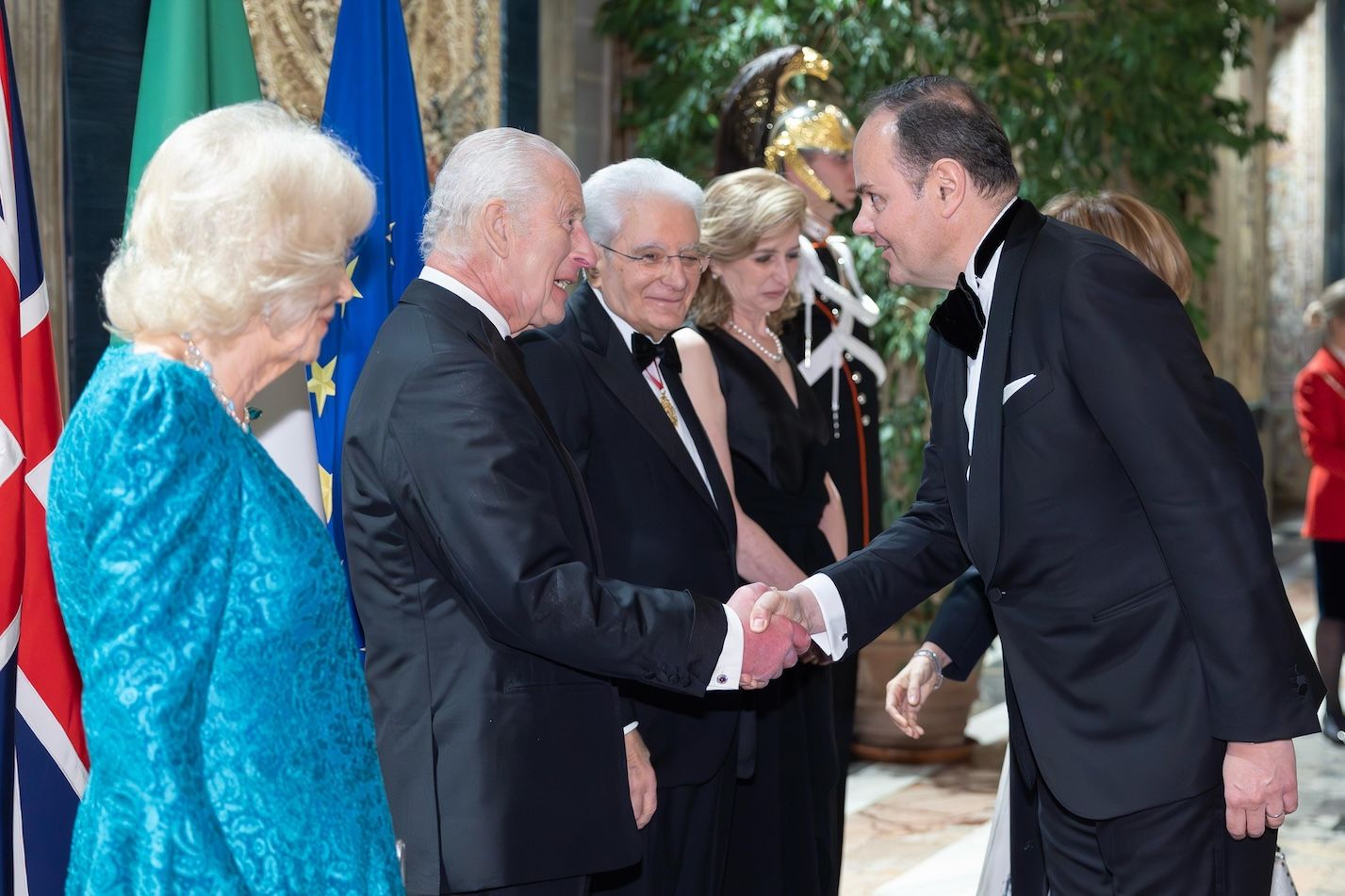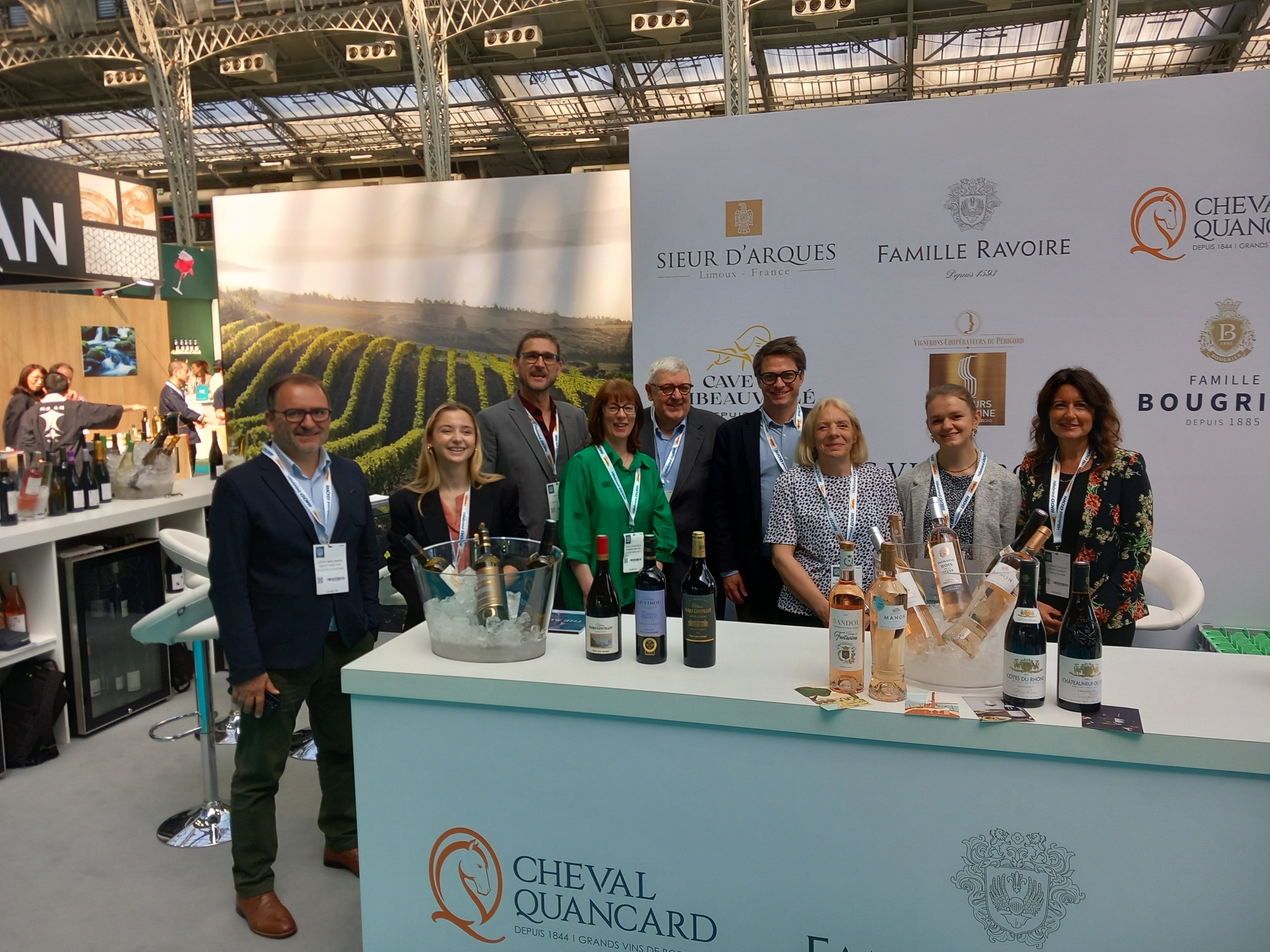Wine buyers from Jeroboams, Hanging Ditch and Robinsons Brewery were able to talk French sparkling wine trends with key producers looking to export to the UK.
(Click here to watch the full The Buyer/ Business France Sparkling Wine Debate and read below for full analysis with short extracts from the full video recording)
There has been very little cause for much celebrating during 2020, with drinks analysts, the IWSR, predicting global wine sales could be down by as much as 14% in 2020, with the UK down 9.7% for still wine and closer to 12% for sparkling. But it’s testimony to the strength of the overall sparkling wine category that it is expected to return to growth faster, in some areas, than still wines.
It’s the resilience of the sparkling, and Champagne market in particular, that makes it stand out and why it is likely to recover so well, says the IWSR.
Which is good news for the UK market that has embraced sparkling wine so much in recent years,making it the stand out performer in what is overall a flat, or slightly declining.
The IWSR, for example, predicts sales of all sparkling wine will jump from 14.4m nine-litre cases in 2017 to 16.2m by 2022 – which is the equivalent per head of drinking 1.8 litres of sparkling in 2012 to 2.8 litres by 2022.
But what styles of sparkling wine from France are turning the heads of influential UK wine buyers? Of course Champagne leads the way, and sets the agenda when it comes to sparkling wines from around the world, never mind France. Thanks to the diversity of French winemaking and the different styles of sparkling that can be made in its many classic wine regions, there is so much more to choose from, to match all styles and price points.
The Debate’s Panel
To help determine what buyers are looking for and what French producers can offer we invited three from each side to take part in the Zoom debate held at the end of June. They included:
UK Buyers

Champagne dominates sales of French sparkling at Jeroboams
- Maggie Macpherson, head wine buyer for Jeroboamswhich has eight shops across London and also runs a wholesale service to the on-trade with a 50/50 split between on and off-trade sales.
- Ben Stephenson, founder of Hanging Ditch wine merchants in Manchester that has now opened a second site, Blossom Street Social, in the city.
- Noel Reid, wine buyer for Robinsons Brewery, responsible for sourcing and blending wines for its 260 plus pub estate of tenanted and managed sites.
French Producers

The Bott family who run Domaine Bott Frères in Alsace
- Marie Gay, export assistant, Cave de La Bastide, based in Gaillac in the Occitanie, south west France, it makes a wide range of reds, whites, rosés and sparkling across all price points for multiple markets. Email: marie.gay@cave-labastide.com
- Vincent Largille, winemaker, and Nicolas Rodique, export manager, Champagne Mary Sessile, an independent family Champagne grower that dates back to the 17th century. It has six different styles of Champagne with a number of vintages in the market, all made from sustainable viticulture. Email: contact@champagne-mary-sessile.com
- Nicole Bott, owner, Domaine Bott Frères, one of the leading producers of Crémant d’Alsace dating back to 1835. It has been organic since 2018. Email: vins@bott-freres.fr
First thoughts
The buyers kicked off the debate looking back on how things have gone in their business during lockdown.
Jeroboams Maggie Macpherson was able to share how it had been able to bring forward the launch of its first e-commerce site, which was due to be launched later in the year, with a soft launch from mid May, which has already proved a success, particularly in drawing in new customers to the business.
Jeroboams’ Maggie Macpherson on launching an e-commerce site during lockdown
She says having a “balanced channel” strategy has been key for the business with a half and half split between retail and on-trade (10 minutes and 6 seconds). It has, she adds, been able to trade very strongly through its eight retail shops across London, at a time when the on-trade sales have dried up, with rosé sales particularly strong.
Noel Reid was able to share his experience of what has been like at the sharp end of the on-trade during Covid-19 and the fact, in the main, Robinsons Brewery and its estate of pubs has effectively had to “cease trading” (13 minutes 30 seconds) but at the same time support its landlords by suspending rents throughout the crisis. Yes, it has still been able to brew beer for any retail business and mainly for exports, but he, and the rest of the on-trade team, have spent the period on furlough.
Noel Reid on life on furlough and what Robinsons Brewery did in lockdown
Ben Stephenson says it has been a time of “opportunities and threats” for his wine merchants and bar business. He says because his original business, Hanging Ditch, is so small it has been “impossible to trade” profitably and keep within social distancing guidelines – and he fears he may have to close it if the situation does not improve.
Fortunately his new site, which is part bar, part shop, Blossom Street Social, has been able to trade well and it’s been a good opportunity to really promote its retail aspect, he says.
Hanging Ditch’s Ben Stephenson on highs and lows of retailing during Covid-19
How is French sparkling doing?
In terms of French sparkling wine, the buyers were agreed that going into lockdown the category was still strong with growing interest for different styles, more premium varieties and a definite organic interest for Crémant in particular.
Macpherson was particularly excited about the opportunities for sparkling wine (21 minutes and 15 seconds) and that, including Champagne, it is Jeroboams biggest selling category of wine. In fact it sells more Champagne than Prosecco across its business – with Champagne making up 77% of all its sparkling sales.
On the “flip side” of that it means other styles of French sparkling are “negligible” by comparison in retail, but “are stronger in the on-trade” – “particularly in the last year or so when we were finding operators coming to us and requesting Crémant”.
Macpherson is also encouraged that more restaurants are seeing Crémant as a sparkling category in its own right on a list, and not being bought as an alternative to Prosecco (22 minutes).
She is certainly open to exploring and reviewing its French sparkling wine range, including looking to extend its Champagne portfolio outside of the “big names”.
Champagne is also a very price focused category, claims Macpherson. Where customers are either looking for a specific name or brand of Champagne and then outside that will be driven by a price point (22 minutes 30 seconds).
Reid says the challenge for French sparkling is in one word: Prosecco. It simply dominates the market and the growth it has seen in recent years. But the good news for France, and other major sparkling wine countries, is Prosecco is helping to bring new, and younger, drinkers into the market to potentially go on and try other styles. “That can only be a positive for the entire category and Prosecco allows people to enter it that people typically would not have gone there before,” he says (24 minutes 30 seconds).
The key for him is to find the right styles of sparkling wine that are going to work in an estate of close to 300 pubs. “We are re-looking at all this now,” he says.
The advantage it has, and needs to make the most of, is once they have customers in the pub, they are then a “captive audience”. For sparkling wine, and particularly, Champagne, that means being able to offer them something that is “fabulous” from a carefully selected limited choice. Which is why he will look for a grower Champagne that can offer that extra layer of quality and value for money.
Then in terms of big branded Champagne again it’s about putting its energy behind a name that it really believes in, not because of what price it can offer, but the quality. That’s the key, says Reid. “Something that people can celebrate with and go ‘wow’”.
Ben Stephenson says (28 minutes), outside of the usual Italian sparkling wines, it has had good success over the years both with Champagne but also different styles like Crémant de Limoux.
GENERAL FRENCH SPARKLING WINE

Cave de La Bastide has built up strong export sales for its range of sparkling wines
The section of the debate that focused in on the role and opportunity for French sparkling wines centred around the wines of Cave de La Bastide.
Although it is yet to find a home in the UK, Cave de La Bastide is well set up for the export market with around 50 wines going to different markets, says its export assistant Marie Gay (4 minutes 45 seconds). Sparkling has become a key part of its export strategy with eight different styles across white, red, rosé, dry and sweet which are made to hopefully cover a wide range of styles, taste preferences and prices. For the purpose of the debate the buyers were sent five of its wines which included:
- Esprit de Labastide, Blanc Perlé which uses a Provence-shaped bottle and is made up from grapes typical to the region Loin de l’œil; Mauzac and Sauvignon Blanc. This is a wine, says Gay, that only has a slight mousse rather than being a full sparkling wine style.
- La Bastide Fizz which is made from the same three varieties; Mauzac; Loin de l’œil; Sauvignon Blanc.
- La Bastide Fizz Pink which is made from Duras and Grenache.
- La Bastide Brut which is 100% Mauzac.
- La Bastide Demi-sec also 100% Mauzuc.
How Cave de La Bastide has built its exports for sparkling wine
In terms of exports the Perle wine is leading the way in terms of markets, interest and sales followed by Le Fizz.
Marie Gay hopes it has a wide enough selection for buyers “depending on what they are looking for”. In particular the winery is focused on giving the best quality and value at the key price points that buyers need, she adds (34 minutes and 10 seconds).
But it is also able to offer “something very different” due to the fact it has such a focus on using local indigenous varieties in its sparkling blends which she knows has become increasingly appealing to buyers as well.
UK buyers on generic French sparkling
So what do UK buyers think of general French sparkling wines (35 minutes)?
Maggie Macpherson says it can be hard to pick out key trends as a lot of its will be dictated to where customers have been on holiday – so it could be demand for Saumur or Crémant de Bourgogne. But get it right and “it certainly works”.
Sparkling Provence rosé has also done well as, again, it is a style that consumers can recognise and understand very easily, she adds. “It gives them the confidence to buy it,” she says, and does not need to be hand sold.
Macpherson is also confident generic French sparkling can sell even if it is at the price point of some Champagnes, or Franciacorta or English sparkling as it gives customers the “reassurance” that this must be a quality wine.
Reid says that ‘hands sell’ is so much harder in a general pub and any generic sparkling above €4 wholesale can be hard for his sector of the market to get behind (37 minutes).Also an average English on-trade customer will be looking for sparkling that have real fizz to them. “It’s a tricky one. We have to find a way to make it commercial for us all, to make everyone a success,” he explains.
“It breaks my heart to say it but price is incredibly important,” he stresses, particularly if you are not hanging it on a name such as ‘Champagne’ or ‘Prosecco’. “It’s hard to push your way in unless you have a price point to help you, or you’re totally unique.”
THE CREMANT CHALLENGE
Domaine Bott Frères
- Nicole Bott, owner, Domaine Bott Frères, one of the leading producers of Crémant d’Alsace dating back to 1835. It has been organic since 2018. Email: vins@bott-freres.fr
Nicole Bott on what makes Alsace Crémant different to the rest of France
The demand for Crémant in Alsace means it now makes up to 30% of production at Domaine Bott Frères, says Nicole Bott, accounting for around 40,000 bottles. Bott, who is part of the eighth generation that has looked after this family owned domain of 15 hectares, claims Alsace is the region with the “most experience” producing Crémants and is second only to Champagne in terms of production.
That said it has only been in the last 30 years that Crémant has become so important to the region and what it is most well known for, she adds. Both in France and overseas. In fact so much has the perception of Crémant changed that it even now gets request from the French government for its Crémants for official events and dinners.
Outside of France she is seeing more demand for Crémant from the US and further into Europe with Italy, Belgium and Sweden all new markets for her (47 minutes).
Bott was able to explain the traditional method of production for AOC Crémant d’Alsace (41 minutes) and the different styles it produces. This includes the close to zero dosage Crémant QV Paul which is made using 100% Pinot Auxerrois to create a “dry, pure, fine bubble and easy to drink style”.
It also has its own premium rosé style made from 100% Pinot Noir which has proved particularly successful in the on-trade with a number of listings at French Michelin star restaurants. “It is a very elegant wine,” she says.
Its most prestigious Crémant is a Blanc de Noirs, also made using 100% Pinot Noir, which it limits to just 5,000 bottles and is aged for 24 months. “The style is very pure and delicate and I insist on a small bubble in the Crémant as that is a sign of high and good quality,” she explains.
Bott expects this year’s Crémant harvest to be even earlier than in the past with picking starting by mid August (44 minutes). “We have never seen that, but every year it is getting earlier,” she adds.
It is part of the reason why it is working towards becoming fully organic, and believes that has to be the way forward for a winery with its experience, particularly if it wants to build and develop its key export markets where organic is very much what buyers are looking for.
UK buyers on Crémant
Jeroboams’ Maggie Macpherson on making a success of Crémant
Stephenson says Crémant (39 minutes) has been a style that has worked well for Hanging Ditch for a number of years, from different regions including Bourgogne, Alsace, Limoux and others.
“It’s a style that people do ask for and it hits a nice price point and offers something interesting,” says Stephenson who thinks more people are discovering Crémant whilst on holiday in France.
He particularly liked the Crémant QV Paul made from 100% Pinot Auxerrois and found it “really interesting” and “consumer friendly”. “They are more of a hands sell but when people try the wines you can convince them.”
Reid says Alsace is such a classic area for the wine trade and for people who love wine (48 minutes 30 seconds), but it’s also “frustrating” that the UK can’t sell more of its wines.
But he is also excited about Crémant’s future, as more sparkling wine consumers look to trade up and explore different styles. “I think we are going to find a whole new category in the middle,” he adds, straddled by Champagne at the top and Prosecco at the bottom. That said it is going to take time for those consumers to feel comfortable and knowledgeable enough to trade up to say Crémant Alsace.
“It’s a tricky one,” he adds and will come down to giving consumers the confidence to trade up and buy more sparkling wine in that “middle category” as people are “not that familiar with it” but once they try it they come back for more.
Macpherson says it is a little easier in retail for Crémant as you can hand sell it, and that’s where she sees it being “for the foreseeable future” (52 minutes 10 seconds). “Crémant also offers incredible value for money,” she adds.
Perhaps the way forward in the on-trade, says Macpherson, is to offer it in place of Prosecco rather than an alternative. But to do that, she and Reid agreed, it has to still work commercially for the operator, which is where the producer may need to invest and help make it work financially for all parties.
It’s worked well, she ads, with English wine producers who have done exactly that in order to get more consumers tasting, trying and buying English wine and building the category.
Bott says she is “optimistic” the second half of the year can help make up for the losses due to the Covid-19 lockdown both in France and its key markets around the world, particularly as it relies so much on the on-trade. That said it saw a massive uplift in online sales, and in two months during lockdown it was able to sell what it normally does online in a year (3 minutes).
OPPORTUNITIES FOR CHAMPAGNE
Champagne Mary Sessile

Vincent Largille is winemaker at the independent family grower Champagne Mary Sessile
This independent family grower produces around 50,000 bottles a year from its home in Treslon, based on making 100% wines from three grape varieties, amongst other styles: Chardonnay (Cuvée Révélation), Pinot Meunier (Champagne L’Inattendue Extra Brut) and Pinot Noir (Cuvée Sessile) (7 minutes 30 seconds). It is in the process of becoming fully organic.
Interestingly its name Sessile comes from the French name for oak and is used to signify the fact it also owns its own forests from which it makes the barrels in which its Champagnes are aged.
It has been able to make up for the losses of sales in Champagne in France during the pandemic by opening up new export markets in countries such as Japan, but export manager, Nicolas Rodigue was able to confirm the region as a whole expects to sell 200 million bottles in 2020 compared to 300m bottles it usually does both domestically and for export (9 minutes).
This is a producer that stands out in Champagne as it is focused on producing single variety Champagnes rather than the usual blend – or assemblage – approach of so many of its peers. Hence its wines are made up of 100% Pinot Meunier, 100% Chardonnay and 100% Pinot Noir with the grapes all coming from the Treslon region (56 minutes 30 seconds).
How Champagne Mary Sessile stands out as an independent grower in Champagne
One of its key cuvées is Champagne L’inattendue Extra-Brut made from 100% Pinot Meunierwhich is made from only 2gm of dosage versus the usual 8gm in many parts of Champagne. This is very much the new trend, though, in Champagne, says Nicolas Rodique.
Another key factor that Champagne Mary Sessile can offer buyers is access to past vintages with up to six vintages available at any one time, he adds.
As with other independent growers in Champagne it can’t rely just on cellar door sales so has now expanded its exports to eight countries including the US, Italy, Czech Republic, Germany, Belgium, Austria, Denmark and Japan – and hopefully the UK. “The export market has to be our future over the next 20 years,” he says, and hopes its domestic to export ratio can move from 75% sold in France to more 50/50 split.
As part of that growth plan it hopes to be able to sell up to 3,000 bottles in the UK within five years.
Buyers on Champagne
Reid says he is very impressed by the approach and offer of Champagne Mary Sessile and the fact as an independent grower it has something as unique as 100% Pinot Meunier is “fabulous” (1 hour 4 minutes 45 seconds). He says the 2gm of sugar dosage might not be the right Champagne for the average Robinsons customer, but “stylistically it’s what people are looking for” and would be ideal for an independent wine merchant and premium on-trade.
“People will always buy Moet Chandon, but if you can give people a reason to buy something else then it’s tremendous,” he says.
Noel Reid & Ben Stephenson On Grower Champagnes
Stephenson says the key for him when looking at grower Champagnes is “quality” and “individuality”. He says you can find grower Champagnes that don’t have the marketing budgets of the big houses, but “massively over deliver” on quality. Yes, it takes time to bed them in but “it’s worth it”.
“The main thing about Grand Marques is consistency and style, but grower Champagnes offer something different.”
Macpherson admits Jeroboams grower Champagne range is negligible comparison to what it is doing with the major houses, but that is not through a lack of appreciation of their quality or diversity (1 hour and 8 minutes). But where they might fall down is more in their packaging and ability to stand out on shelf versus the bigger competitors. In fact she would encourage grower producers to be much braver with their packaging so that they offer a real point of difference on shelf.
Up to now it has not been able to find a grower that ticks the three key boxes of “price quality ratio, the unique factor (like the 100% Meunier) and the packaging – have all three of those and you are on to a winner,” she claims.
Looking ahead
We finished the debate by taking a quick look ahead to the rest of the year and what the producers and buyers felt was in store for us all. It was a mixed picture of optimism, and realism.
Whilst Bott and Gay were very hopeful the markets would be open again and expected to be selling wine around the world there was a more of a guarded approach at Champagne Mary Sessile on the back of what are expected to be tighter controls within Champagne in terms of both production and sales for the year ahead.
As for the buyers Macpherson says it was a case of cracking on with the strong business it was already doing, expanding and growing its online arm and looking to support the on-trade as it comes back to life (one hour 18 minutes).
Reid sees the next few months as being “tricky” both in terms of getting the on-trade moving again, but also doing his day to day work of blending new wines from key producers around the world that he would usually do in person.
Stephenson says it is all about continuing to “constantly adapt” and think about how you can run your business differently to suit the conditions you are operating in.
The buyers and producers were then asked where they would most like to go to travel for work when they can and enjoy a glass of wine. You can see the buyers and producers’ responses, below but it seems they will all be happy to meet up at Wine Paris in the new year and hopefully start up where they left off.
Where UK buyers want to go 1st when they can travel
Where French producers want to go 1st when they can travel










































